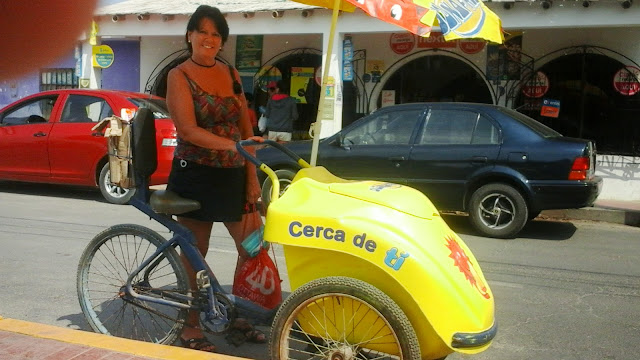February 15 - 18, 2015
A couple of days of mucho actione heading south in Peru. After spending the night in the coastal town of Paracas, we ventured to the Ballestas Islands by high-speed boat to check out the Peruvian version of their mini-Galapogos. These rocky outcroppings in the Pacific are home to thousands of sea lions, millions of birds and plenty of fish (to sustain the birds and seals, not to mention the fishing fleet). The area is a stark contrast to the changing economics of Peru, the old fishing activities are being supplanted by tourism judging by the boats hauling people instead of fish. Even more obvious are new developments such as a massive liquefied natural gas port to export energy being pumped from the Amazonia interior. As well, a couple of major steel plants operate in the area while the natural ecological zone is under federal protection as a national park.
One thing about gulls, boobies, terns, penguins and seals, they don't defecate from the nest. Glad to leave the stench of guano behind. Can't believe people shovel the stuff for a living.
We did make a a major discovery along the way and settled an age-old debate, (at least in our minds), which has raged between Chile and Peru . Namely, which country owns Pisco and can claim the bragging rights to the best libation on the continent. A pit stop at a Peruvian winery and pisco distillery in Ica proved to us that Peru can rightfully wear the Pisco crown - the proof is in the proof!
A couple of hours drive inland brought us upon massive sand dunes with a small town around an oasis smack in the middle. The only activity in this windswept region is riding dune buggies over the many dunes (more like sand mountains). As a sideline, visitors can ride surfboards down the steep inclines. We declined, since the sand was already burning our feet in our sandals, we could only imagine the increased sensation when the inevitable tumble occurred. We needed showers badly that day after being sandblasted but it was so fun!
Besides, it was time to continue through the desert to Nazca, the site of the world's most extensive geoglyphs preserved in the flatlands of the Atacama desert. While there are a couple of observation towers beside the highway where a few of the lesser designs can be viewed, the only real way to appreciate their impressive extent is to fly over the landscape in a small plane at a couple of hundred metres with the pilot adeptly circling the various figures while shouting out the description: "monkey, hummingbird, condor, dog, flamingo, whale, spider, parrot and ET. I kid you not, there's what they refer to as an astronaut figure, or ET carved into the ground between 400 and 600 AD. Someone had a sense of humour, either that or a rogue band of juvenile delinquents of the day! It's quite incredible to think that an entire civilization burned itself out making lines in the desert.
The theories abound as to purpose of the Nazca lines in the middle of one of the driest unforgiving spaces in the world (why would anyone trudge around in the desert without water moving rocks and stones and sweeping dirt). What is known is that climate change 2,000 years ago affected the lives of the Nazca people and many years of drought limited their ability to survive. Whether the creation of these elaborate symbols was to appease the gods or had some other purpose is unclear, but one could conclude that the energy and resources committed to this endeavour contributed to their decline. They would have been better off directing this energy to building more irrigation channels or digging deeper wells. Instead, like many civilizations and societies in decline, they expended their resources in futile pursuits instead of addressing their real issues.
Sounds so familiar... will we ever learn?
After our flight we hopped into the van with our new friend Raúl for the long dusty trek to Arequipa, some 9 hours away. It's been a hell of a ride...
Of note, we stopped at a nice buffet restaurant in the middle of nowhere for lunch and I snapped a pic of some sweet Guinea pigs, soon to be someone's dinner. Cuy, in Español, is a delicacy and we are in cuy country. Rainer plans to order it in Cusco....usually people raise their own in their homes, for consumption.
Plan ahead. If there's a fire, start digging out the hydrant. Just one example of how things work - or don't, as it were.
We were astounded to learn that a) rice is grown in Peru and b) it grows in the middle of the desert. You can see the lush green fields at the foot of the mountains. They bale the stalks for cattle.








































No comments:
Post a Comment